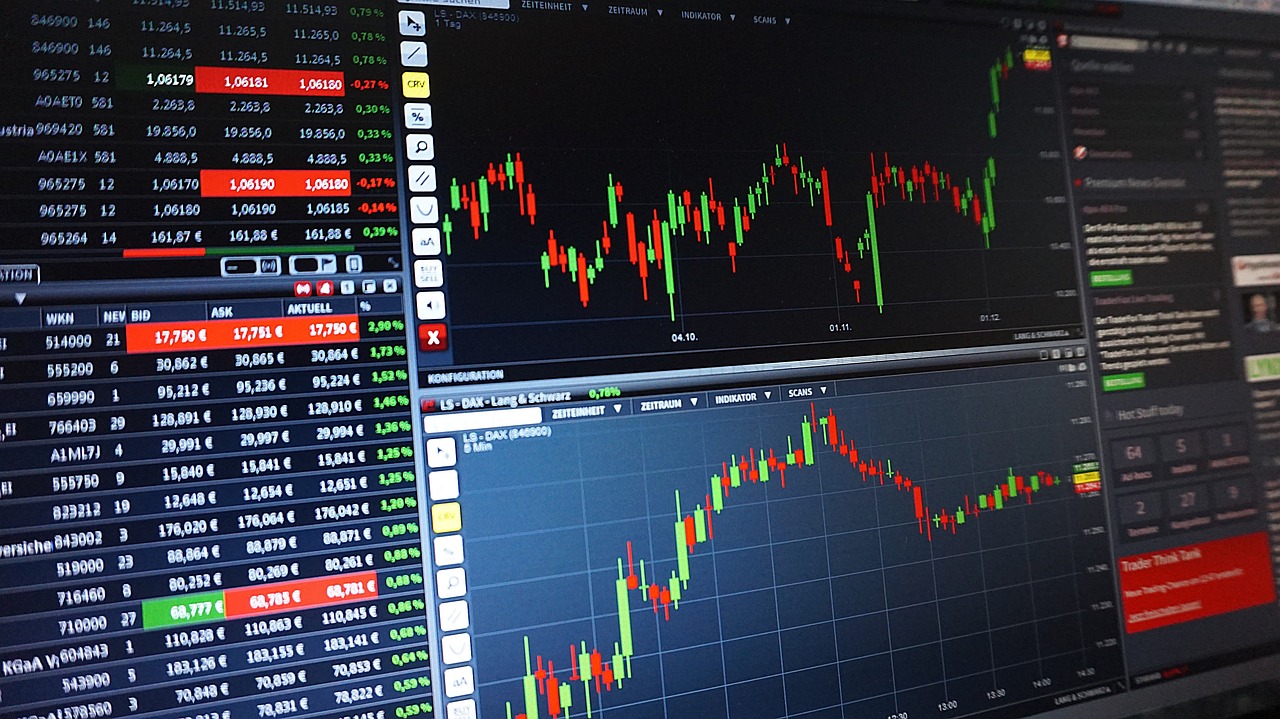This post will show you how to create a successful trading plan.
When you want to enter the trading world, you must carefully plan your steps. Underestimating the importance of research and preparation could put your investments in danger, and there might not be much you can do to improve them.
On the other hand, a strong trading plan could help you to make the right decisions and protect your funds. A written plan might help you become a successful trader and increase your return on investment.
Writing a solid plan requires much time, research, and effort. That might allow you to create a methodology that could work for the financial markets.
Here are the things you need to consider to create a successful and robust trading plan.
Table of Contents
1. Review Your Skills Thoroughly
Before you implement your trading plan, you must ensure you’re ready to start trading. It would also be a good idea to put your system through a simulation process and find out if it works and could help you succeed. It’s just as vital that you build up strong confidence.
After all, entering the live trading waters could be a significant change, and it might be challenging if you’re new to it. Improve your decision-making skills and ensure that you can spot crucial signals early.
Then, it would be best if you reacted quickly – only then could you protect your investments and build a strong portfolio. Once you have a strong plan and are ready to start trading, you might be able to stand above your competitors and keep your money safe.
2. Do Research In Advance
Another step you need to take before using your trading plan in the real market is to do your research in advance. Watch what’s happening worldwide and stay up to date with the latest developments.
Websites like TradingView could help you check the latest economic calendar. There, you might be able to keep up with the dates of significant events and releases that could impact the security of the market and your investments. You might also want to look out for any crucial reports that should come out.
Waiting for these might help you to make wiser decisions and tweak your trading plan to perfection. You might be able to base your trading efforts on probabilities and avoid dangerous situations.
3. Set Your Risk Levels
Setting a risk level should be a part of any investment or trading process. That might help you determine how large part of your portfolio you might be able to put at risk and avoid trouble simultaneously.
But how can you set your risk level? First, you need to think about your trading style. Then, it would be best if you considered how big your risk tolerance is. Every trader is different, and so is every trading plan.
So, your risk level should depend solely on your circumstances. However, the most common range is between 1% and 5% of a portfolio. Losing such money at a specific market should encourage you to leave immediately.
Sometimes, you might stay away from the specific market for good. On other occasions, it might be enough for you to take a break and reconsider your strategy.
4. Define The Goals You Want To Achieve
To stay on top of the performance of your portfolio and trades, it’s essential that you set realistic goals. Profit targets could help you make the right decisions and see if you’re getting the desired results.
Choosing the right trades and opportunities for your portfolio might also be confusing and overwhelming at the beginning of your journey. With risk/reward ratios in place, you can keep your losses and earnings in check.
Most investors set their potential profit at least three times bigger than the risk. To make your trading successful, make sure that you review your goals regularly and adjust them as needed.
5. Make Sure You’re Mentally Ready To Start Trading
Trading can be very stressful, so you need to be mentally ready to enter the live trading market. When you feel tired or anxious, you might be prone to make more mistakes, and it could cost you a fortune.
To improve your chances, make sure that you get enough sleep every night. That might help you focus more and think about your next steps. So, ensure you’re not angry or distracted when trading. You could miss some crucial warnings or signals that could harm your efforts.
Perhaps you could devise a mantra or a morning ritual that could help you get into the zone. You should also remove distractions to focus on trading with no limitations.
6. Specify Your Exit And Entry Rules
Many traders keep looking out for buy signals. However, it’s even more important to know when you should exit. You might want to avoid loss at all costs, but it can’t often be prevented, and you should sell even though you’re down.
Remember to set a profit target for each trade to keep your trading portfolio healthy. Once you reach the goal, you might want to sell a part of your position and prevent further loss on the rest of it. But simultaneously, you should have a clear set of entry rules.
It would be best to find the right balance between how complicated and simple the system should be – it should be practical and act fast when the conditions are met. When you set clear rules and let your computer decide about suitable trades, you might be able to become more successful.
There won’t be any emotions involved in the decisions, and you might be able to find success where you wouldn’t expect it otherwise.
7. Keep Records Of Your Efforts
To make your trading plan more successful, you need to become excellent at keeping records. Note down how it happened.
Focus on your goals, and when you enter or exit each trade, write down all the details you can think of. Have you won a trade? Then, you can return to your records and study why it happened.
You might be able to learn what works for the specific market, which might help you repeat the success in the next trade. However, keeping detailed records could also help you to understand why some of your trades didn’t go well. That could help you to avoid similar mistakes in the future.
Creating A Successful Trading Plan: Frequently Asked Questions
What are the critical components of a successful trading plan?
- Define your goals and risk tolerance: Be clear about your financial objectives and the risks you’re comfortable taking. This helps set realistic expectations and guide your trading decisions.
- Choose your assets and trading style: Decide which assets (stocks, forex, etc.) align with your goals and research different trading styles (day trading, swing trading, etc.) to find one that suits your personality and timeframe.
- Develop a trading strategy: Formulate rules and indicators that guide your trade entry and exit points. This could be based on technical analysis, fundamental analysis, or a combination of both.
- Risk management: Implement proper risk management practices like stop-loss orders and position sizing to limit potential losses.
- Money management: Establish a clear plan for allocating your capital across different trades to avoid overexposure.
- Record-keeping and journaling: Track your trades, analyze your performance, and identify areas for improvement. This helps you learn from your experiences and refine your strategy.
How can I adapt my trading plan to different market conditions?
- Remain flexible: Markets are dynamic, so staying rigid with your plan can be detrimental. Be prepared to adjust your entry and exit points or even your overall strategy based on changing market conditions.
- Stay informed: Keep up with economic news, industry trends, and company announcements that can impact your chosen markets.
- Backtest your strategy: Test it on historical data to see how it performs under different market scenarios. This helps you identify its strengths and weaknesses and adapt it accordingly.
What are some common mistakes to avoid when creating a trading plan?
- Ignoring risk management: Underestimating risk can lead to significant losses. Always prioritize risk management and stick to your stop-loss orders.
- Following emotions: Trading based on emotions like fear or greed can cloud your judgment. Stick to your plan and avoid impulsive decisions.
- Overtrading: Trading too frequently can lead to unnecessary costs and emotions. Stick to your chosen trading frequency and avoid chasing every opportunity.
- Lack of discipline: Consistently following your plan, even when faced with losses, is essential for long-term success.
- Unrealistic expectations: Expecting quick and easy gains is unrealistic. Focus on developing a sustainable trading approach and managing your expectations for gradual progress.
Stay On Top Of The Performance Of Your Trades
In conclusion, there’s no guarantee that your trades will succeed – and it might play with your emotions. Winning a trade might make you feel more confident and daring in future trades. But when things don’t go well, you might become more apprehensive and sensitive to the risk of trading.
You might also feel angrier, and your decisions could become careless. You must look after your well-being and analyze the performance of your trades. Perhaps you could start a journal to note your observations and conclusions.
You could always study them later and see if there are any repeating patterns. Ultimately, it’s also essential that you maintain your confidence and learn to keep your emotions under control to make the best decisions possible.
INTERESTING POSTS
About the Author:
Mikkelsen Holm is an M.Sc. Cybersecurity graduate with over six years of experience in writing cybersecurity news, reviews, and tutorials. He is passionate about helping individuals and organizations protect their digital assets, and is a regular contributor to various cybersecurity publications. He is an advocate for the adoption of best practices in the field of cybersecurity and has a deep understanding of the industry.










